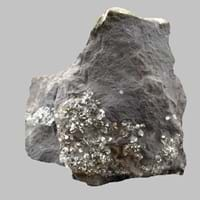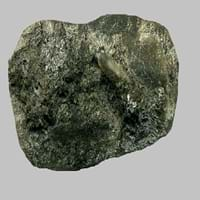Definition
Argillites are highly compact sedimentary or slightly metamorphosed rocks that consist largely or wholly of particles of clay or silt but lack the fissility of shale or the cleavage characteristic of slate
Kenyte is a variety of porphyritic phonolite or trachyte rock with rhomb shaped phenocrysts of anorthoclase with variable olivine and augite in a glassy matrix
Origin
Unknown
Mount Kenya
Discoverer
Unknown
J. W. Gregory
Etymology
From Latin Argilla (clay) and -ite in English which became agrilla+ -ite = Argillite
From the mountain ranges- Mount Kenya and is named by J. W. Gregory in 1900
Class
Sedimentary Rocks
Igneous Rocks
Sub-Class
Durable Rock, Soft Rock
Durable Rock, Medium Hardness Rock
Group
Not Applicable
Not Applicable
Other Categories
Fine Grained Rock, Opaque Rock
Fine Grained Rock, Opaque Rock
Texture
Clastic, Polished
Glassy, Granular
Color
Dark Grey to Black, Pink, Red, White
Brown, Buff, Cream, Green, Grey, Pink, White
Durability
Durable
Durable
Scratch Resistant
Yes
Yes
Appearance
Rough and Dull
Banded and Foilated
Interior Uses
Decorative Aggregates, Homes, Interior Decoration
Decorative Aggregates, Entryways, Homes, Interior Decoration, Kitchens
Exterior Uses
As Building Stone, Garden Decoration, Office Buildings
As Building Stone, Garden Decoration, Paving Stone
Other Architectural Uses
Curbing, Whetstones
Curbing
Construction Industry
Used for flooring, stair treads, borders and window sills.
As Dimension Stone, Cement Manufacture, Construction Aggregate, for Road Aggregate, Landscaping, Making natural cement, Manufacture of Magnesium and Dolomite Refractories, Production of Glass and Ceramics
Medical Industry
Not Yet Used
Not Yet Used
Antiquity Uses
Artifacts, Monuments, Sculpture
Artifacts, Monuments, Sculpture
Commercial Uses
Fire resistant, Used to manufracture paperweights and bookends
Cemetery Markers, Creating Artwork
Types
Not Available
Not Available
Features
Is one of the oldest rock
Application of acids on the surface causes cloudy frosting, Available in Lots of Colors and Patterns, Dissolves in hydrochloric acid, Is one of the oldest rock
Archaeological Significance
Famous Monuments
Data Not Available
Data Not Available
Famous Sculptures
Data Not Available
Data Not Available
Formation
An argillite is a fine-grained sedimentary rock mainly composed of clay particles which forms from lithified muds which contain variable amounts of silt-sized particles.
Kenyte is a fine-grained, hard rock which is a type of metasomatite, essentially altered basalt. It forms with or without crystallization, either below the surface as intrusive rocks or on the surface as extrusive rocks.
Mineral Content
Biotite, Chlorite, Feldspar, Micas, Muscovite or Illite, Plagioclase, Pyrite, Quartz
Albite, Amphibole, Biotite, Cancrinite, Feldspar, Hornblende, Plagioclase, Pyroxene, Sodalite
Compound Content
Iron(III) Oxide, Potassium Oxide, MgO, Silicon Dioxide
Aluminium Oxide, CaO, Iron(III) Oxide, FeO, Potassium Oxide, MgO, MnO, Sodium Oxide, Phosphorus Pentoxide, Silicon Dioxide, Titanium Dioxide
Types of Metamorphism
Not Applicable
Burial Metamorphism, Cataclastic Metamorphism, Impact Metamorphism
Types of Weathering
Biological Weathering
Biological Weathering
Types of Erosion
Chemical Erosion
Chemical Erosion, Coastal Erosion
Grain Size
Fine Grained
Fine Grained
Fracture
Conchoidal to Uneven
Conchoidal to Uneven
Streak
White to Grey
White, Greenish White or Grey
Porosity
Highly Porous
Highly Porous
Luster
Waxy and Dull
Greasy to Dull
Compressive Strength
Not Available
Toughness
2.6
Not Available
Specific Gravity
2.56-2.68
2.6
Transparency
Opaque
Translucent to Opaque
Density
2.54-2.66 g/cm3
2.6 g/cm3
Specific Heat Capacity
Not Available
Resistance
Heat Resistant, Impact Resistant
Heat Resistant, Impact Resistant, Wear Resistant
Deposits in Eastern Continents
Asia
Bangladesh, China, India, Russia
Indonesia, Iran, Russia, Saudi Arabia, Sri Lanka, Taiwan, Thailand, Turkey, Turkmenistan, Vietnam
Africa
Ethiopia, Kenya, Morocco, South Africa, Tanzania
Angola, Egypt, Madagascar, Namibia, Nigeria, South Africa
Europe
Austria, France, Germany, Greece, Italy, Romania, Scotland, Spain, Switzerland
Andorra, Finland, France, Germany, Great Britain, Italy, Norway, Portugal, Spain, Sweden
Others
Not Yet Found
Greenland
Deposits in Western Continents
North America
USA
Canada, USA
South America
Bolivia, Chile, Colombia, Ecuador, Peru, Venezuela
Brazil, Chile, Colombia, Uruguay, Venezuela
Deposits in Oceania Continent
Australia
New South Wales, New Zealand, Queensland, Victoria, Western Australia
New Zealand, Queensland, South Australia, Tasmania, Western Australia










